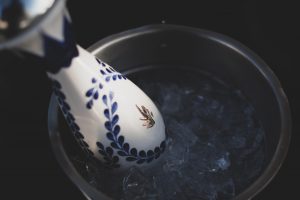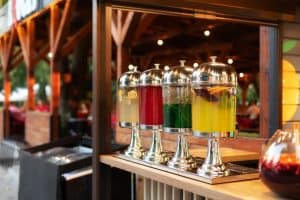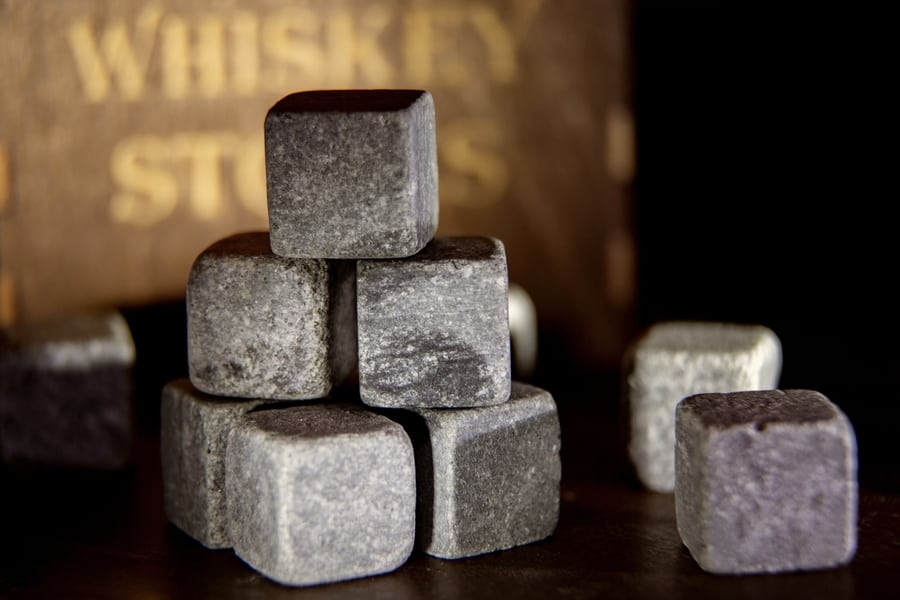
Have you also been getting your dad or whiskey connoisseur friend whiskey stones for Christmas or their birthdays? You’re not alone.
You’ve probably never considered what whiskey stones are made of until now, you know your friends like whiskey, and you know these little cubes mean a lot to whiskey drinkers, so they seem like the perfect gift.
Now that you’ve decided to do more research on the topic, you’ve come to the right place, so what are whiskey stones made of?
Whiskey stones are typically made of soapstone, granite, marble, or stainless steel. What makes a good whiskey stone is its strong, non-porous, and non-absorbent nature. Over the years, whiskey stones have been customized to represent various locations, like the Irish Whiskey stones, or to be in the form of different shapes, like the ball-like stainless steel stones.
Continue reading to learn everything you need to know about what whiskey stones are made of and even more information about whiskey stones.
Whiskey Stone Materials Explained
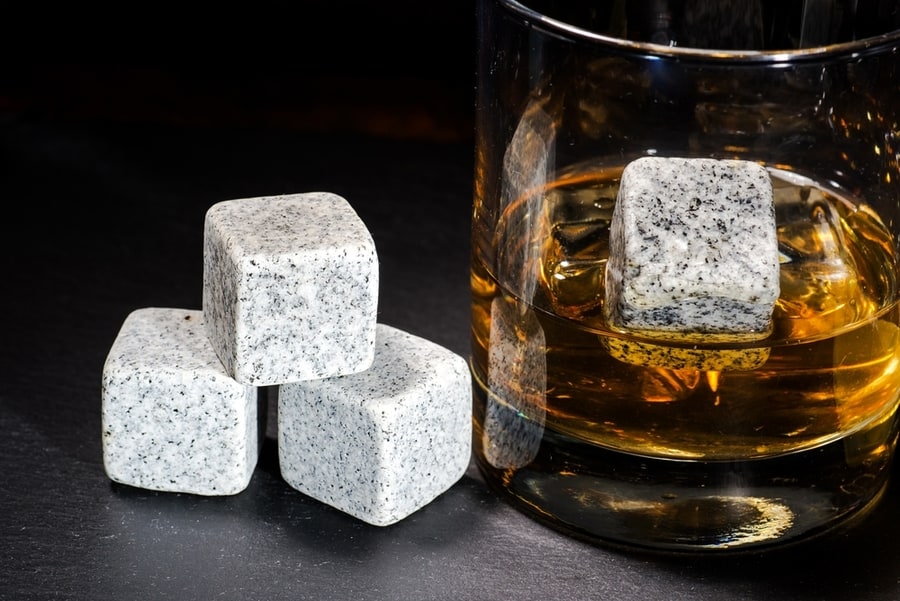
Whiskey stones come in different materials, shapes, and sizes, each with its own advantage over the other. Here are some whiskey stone materials and some of their advantages in case you’re considering buying some stones for your dad’s next birthday.
Soapstone
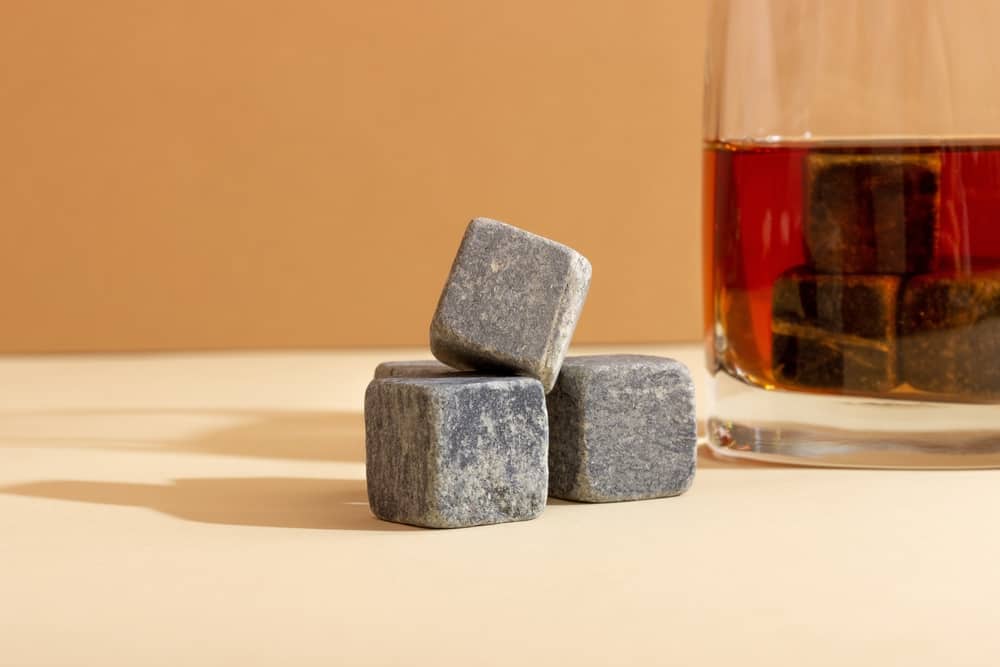
Whiskey Stones made from soapstone are odorless, tasteless, and non-porous, so they won’t impart any off-flavors or aromas to your whiskey.
Soapstone retains temperature better than most other whiskey stone materials except for stainless steel, so whiskey stones made with soapstone can shave about 5 degrees off the temperature of your 3 oz drink. 3 soapstones in your whiskey can substitute for one ice cube.
A common concern with natural stones is the risk of rocky notes leaching into your bourbon. Soapstone is safe to consume, so there’s no risk of the stones leaching any toxins or impurities into the whiskey.
Soapstone is also very durable, so whiskey stones made from this material are less likely to chip or crack. This natural stone is easy to clean and maintain, so you can use your whiskey stones again and again without worry.
Granite

The natural gray color of whiskey stones made with granite gives a distinctive look to any drink. Granite is a natural heat insulator, so it’ll keep your drink colder for longer.
Like soapstone, granite whiskey stones are naturally non-porous and tasteless, ensuring that no flavors or odors will be transferred to your whiskey. They’re also durable, long-lasting, easy to clean, and reusable.
Marble

Marble won’t absorb the flavor or scent of your whiskey, so you can use the same stones for different whiskeys without compromising the flavor of each whiskey. Additionally, marble is a natural material that is highly durable and can be used for a long time without deterioration.
Let’s not forget that marble is an aesthetically pleasing material, making it a great choice for those looking for a visually appealing set of whiskey stones.
Stainless Steel
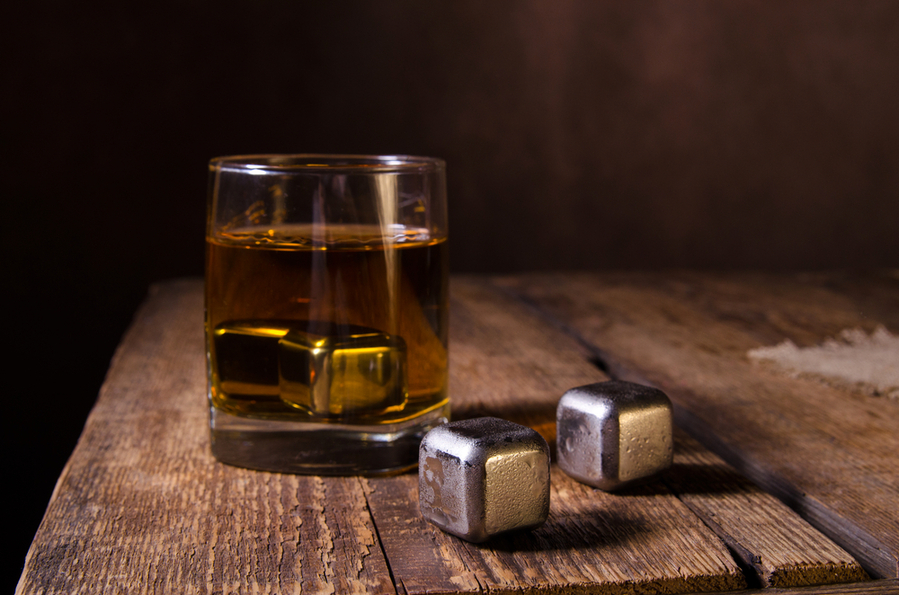
Like other whiskey stones, stainless steel stones are non-porous and non-absorbent. However, they offer much more advantages and, dare I say, are the best whiskey stones on the market.
Stainless steel whiskey stones are corrosion-resistant and will not rust, making them a safe choice for repeated use. They’re also generally easier to clean than their soapstone counterparts.
More importantly, Whiskey stones made with stainless steel provide a long-lasting cooling effect. The steel material holds the chill longer than stones made of other materials, keeping drinks cold even after multiple rounds.
Some stainless steel stones contain edible non-freezing alcohol. This is ingenious because alcohol has a lower freezing point than ice. So one of these stones can drop your 3 oz drink by 12 degrees.
Other stainless steel stones contain a freezing gel that keeps your whiskey colder for longer. Balls of stainless steel can roll around your drink to open up its flavors while simultaneously keeping the drink cold. See why stainless steel is the best material for whiskey stones yet?
A Brief History of Whiskey Stones

Whiskey stones were reportedly first invented in the early 2000s as an alternative to using ice cubes to cool down drinks without diluting the flavor of the drink.
The idea for whiskey stones originated from the practice of using stones to chill drinks in the far north of Scandinavia. Some sources say whiskey stones originated in Scotland, but we don’t know for sure.
The northern Scandinavian or ancient Scottish people used to cool down their home-brewed beer or whiskey with stones kept in the river during the summer months. The practice quickly spread and eventually made its way to the Americas and the rest of Europe.
Today, whiskey stones are a popular way to cool down any spirit. They can be found in a wide variety of shapes, sizes, and materials, making them a versatile addition to any home bar.
Benefits of Using Whiskey Stones
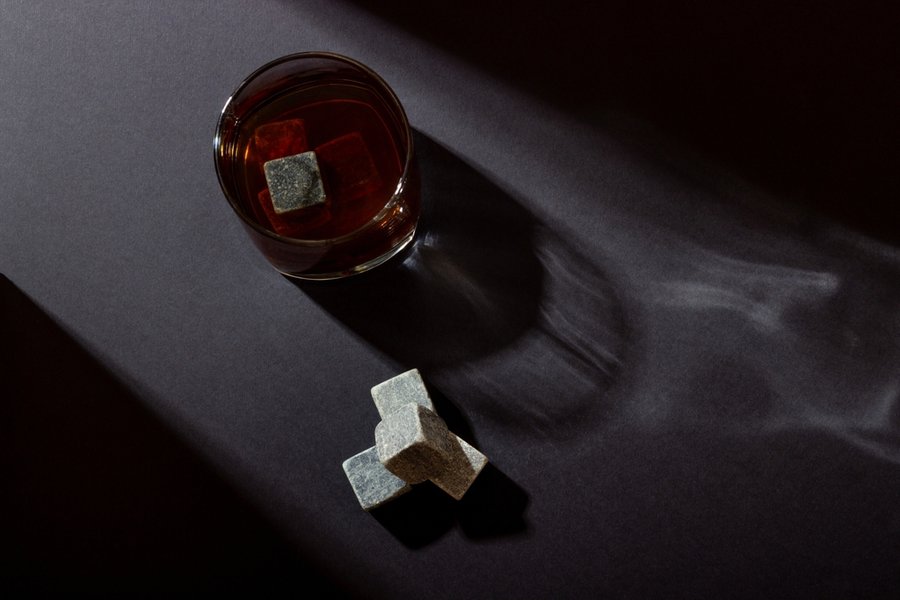
1. Maintains Temperature: Whiskey stones are better at maintaining the temperature of the whiskey because they don’t melt as ice does. You get to enjoy a chill glass for longer.
2. Reduces Dilution: The stones are also more efficient at cooling the whiskey than ice because they don’t melt as quickly. This means that your whiskey won’t become watered down as quickly, allowing you to enjoy the full flavor of your drink.
3. Environmentally Friendly: Whiskey stones are much more environmentally friendly than regular ice cubes. Since they don’t melt, they don’t require any energy to keep them cool, and they don’t require any water to create them.
4. Easy to Use: All you have to do is place them in the freezer for an hour or so and then add them to your whiskey. They don’t require any special tools or equipment, and they’re very easy to clean.
Cleaning and Caring for Whiskey Stones

These stones are made of natural materials and can be easily damaged. It’s best to clean them with warm water and a gentle soap or vinegar to prevent bacterial growth and remove all absorbed flavors.
Once cleaned, be sure to dry the stones completely before putting them away. This prevents any moisture buildup in the stones, which can lead to bacterial growth.
If you are using whiskey stones that have been frozen, be sure to allow them to thaw before cleaning and make sure they are completely dry before putting them away.
Additionally, you should never scrub the stones with anything abrasive, as this could damage their surfaces. It’s also important to store the stones in an airtight container, whether or not you’re freezing them, to prevent any dust or dirt from getting on them. With proper care and cleaning, your whiskey stones should last for many years.
Final Thoughts
Purists might tell you to dispose of your whiskey stones because they don’t do anything and yada-yada-yada, but whiskey stones are an excellent alternative to traditional ice cubes.
If you want a semi-chill bourbon without the dilution that comes with ice cubes, then these stones are your bet. They barely need maintenance, and you can reuse them for as long as you like, what more could you ask for?


